Recent results from Tully test centre located in Kildare town have demonstrated an average difference of €110 in the finishing period between 5-star commercial bulls and 1-star bulls based on their terminal index. The difference between individual bulls of the same breed was as high as €200. The main reason for the €110 difference is due to the 5-star terminal bulls slaughtering on average 15 days younger, having a heavier carcass weight of 14kgs due to higher kill-out of 2% and lower feed intake of 0.4 kilos per day when compared to the 1 star animals (see table 1 below). The 5-star animals also had a higher total meat yield percentage. All bulls used in the analysis were from suckler cows.
The main aim of the progeny testing model at Tully is to increase the accuracy of genetic evaluations for AI sires of interest. This is carried out by collecting information on 20 commercial progeny from each AI sire identified. Progeny are selected from AI sires tested through the Gene Ireland maternal program, however some progeny of proven AI sires are also selected to allow ICBF validate their sire’s indexes.
The selection process is carried out by using the ICBF database to locate Gene Ireland AI sired progeny across Ireland. Age and gender also form part of the selection process. Once the progeny are identified farmers are contacted. The animals are then weighed on farm and they are then collected by ICBF. The price paid is based on the average for 5-star terminal animals of similar age and weight paid in the marts that week. To date there has been 1984 commercial animals slaughtered from Tully since the move away from testing pedigree bulls 3 years ago. The commercial animals slaughtered consisted of 1301 bulls, 555 steers and 128 heifers.
Measurements obtained
- When the animals are purchased they have an acclimatisation period of 30 days followed by a performance test period of 90 days. The health program includes vaccinating for IBR, BVD, RSV, PI3, Blackleg & other clostridia diseases. The diet for the bulls is ad-lib concentrates with 3 kg of hay fresh weight. Steers and heifers are offered 10 kg of concentrates and 3 kg hay fresh-weight per head per day.
Throughout the 90-day finishing period a number of key traits are recorded. All animals are genotyped using a customised chip to verify parentage. Key data recorded includes average daily gain, feed conversion efficiency, muscle, skeletal and functionality traits, scanned measurements for muscle and fat depth along with intramuscular fat. Health and disease data is also recorded such as lameness, genetic defects, pneumonia and other illnesses. Scrotal circumference measurement is obtained on bulls.
- Bulls are slaughtered between 15-18 months with the vast majority being slaughtered under 16 months of age. Steers and heifers are slaughtered between 22 and 18 months, respectively.
Measurements obtained at the factory
When the animals are slaughtered there is a number of meat quality phenotypes recorded. These include carcass weight, carcass fat and carcass conformation. The carcass is then cut into 19 primal yields and each cut is weighed. Ph is recorded hourly and ultimate. Meat eating quality traits are also recorded. These include colour of the loin, visual marbling of the loin, composition analysis, intramuscular fat %, protein %, moisture %, cook loss, shear force, and sensory analysis.
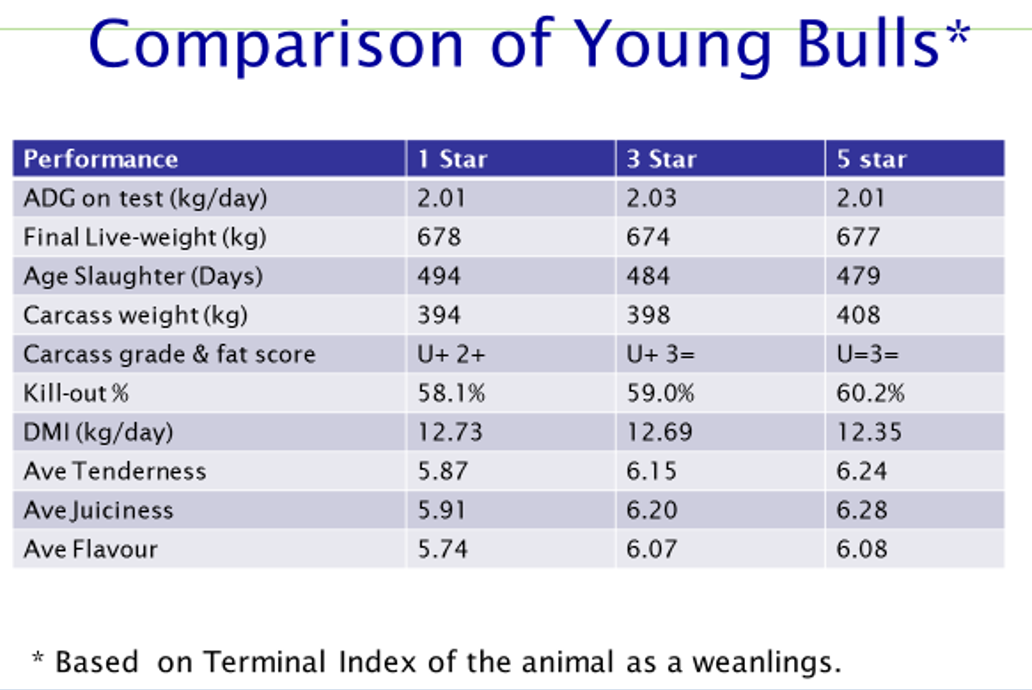
€200 difference within breed
The data in table 2 below compares two individual bulls (refer to pictures i.e. bull 1 and bull 2) based on their finishing period in Tully and slaughter data. There was a difference of 3.7 kilos of dry matter consumed per head per day between the two bulls. In value terms bull 2 consumed €85 less feed than bull 1 over 100 day finishing period despite being sired by the same breed and finished in the same pen under similar environmental conditions. As shown in table 2, bull 2 was from a 5-star feed intake sire (AHZ) and bull 1 (YHB) was from a one star feed intake sire, therefore the sires indexes reflect the performance of its respective progeny. Despite bull 2 eating less feed its carcass was 28 kilos heavier at slaughter leaving a difference of €112 euro between the bulls. Both bulls were of similar age.
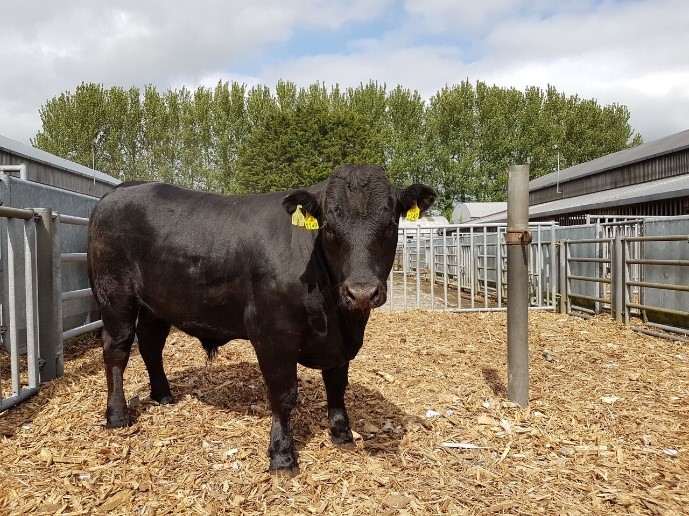
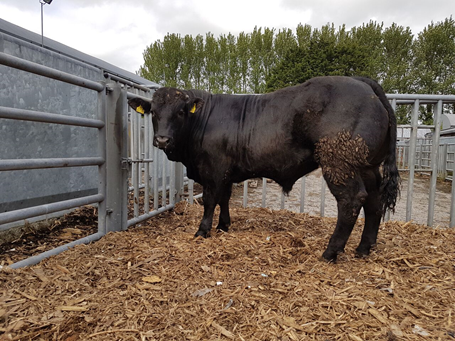
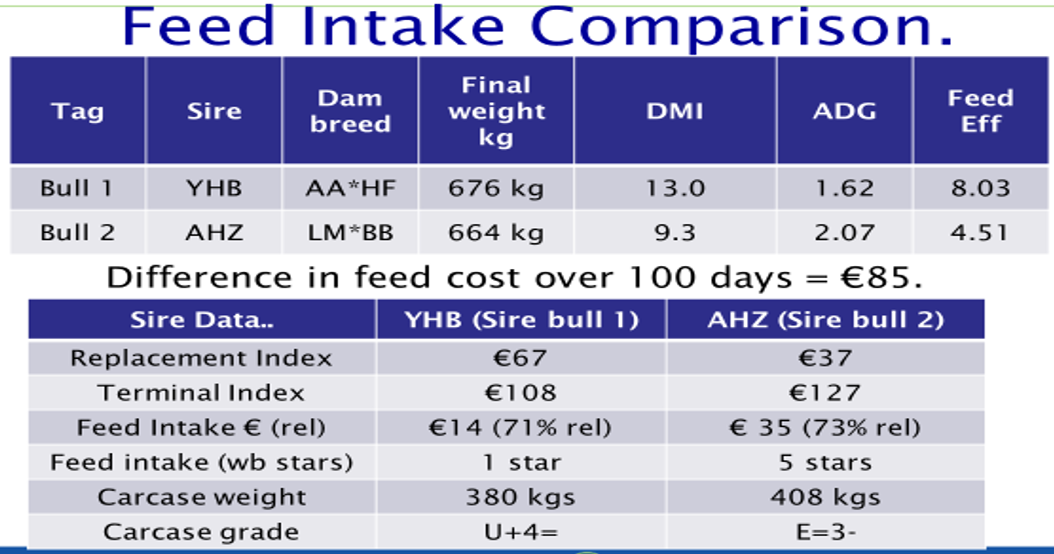
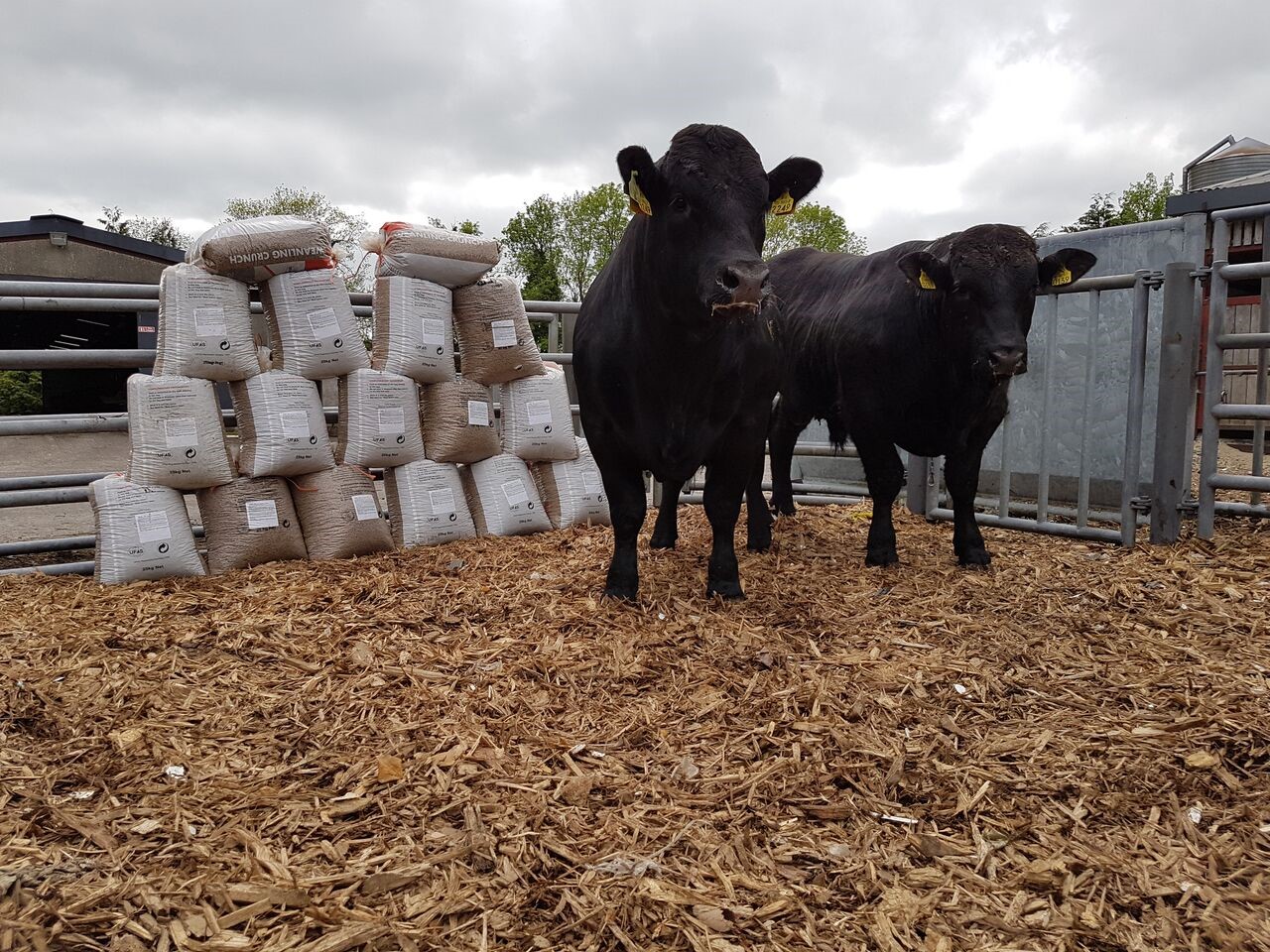
Grading and high value cuts
Following these bulls through to slaughter, Bull 2 also performed best at grading E=3- (See image 1.0) in comparison to bull 1 which graded U+4= (See image 1.1). Based on carcass dissection we can see that bull 2 had the largest striploin which was 1.42 kgs heavier than bull 1. Overall bull 2 left the highest margin of profit due to being the most efficient animal over the finishing period and due to the overall slaughter value of the animal in comparison to bull 1. In conclusion, the total difference from finishing (€85) to slaughter (€112) equates to nearly €200 between both animals.
Image 1.0
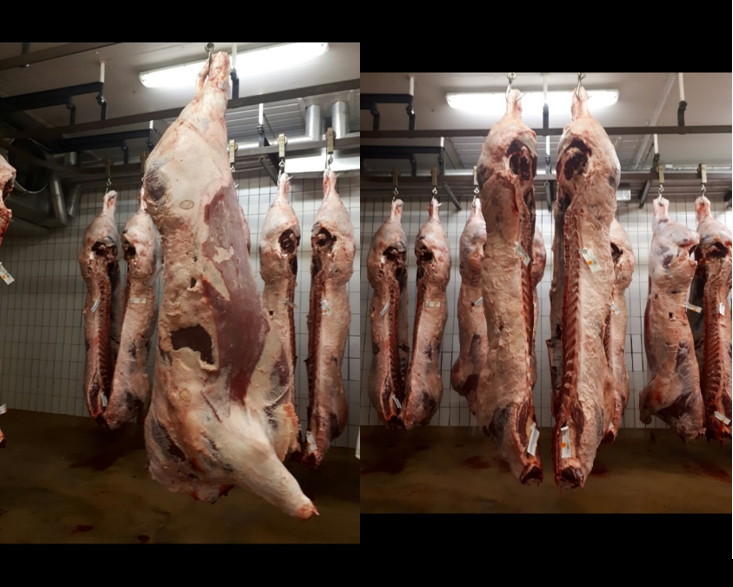
Image 1.1
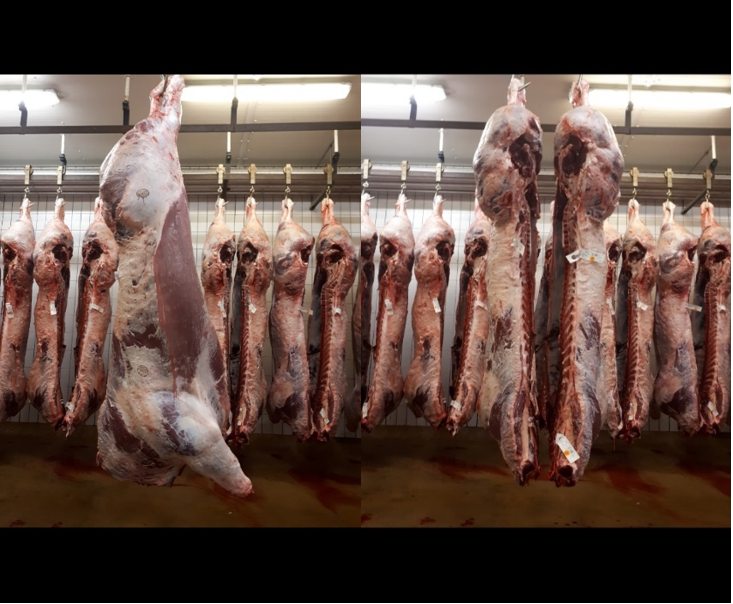
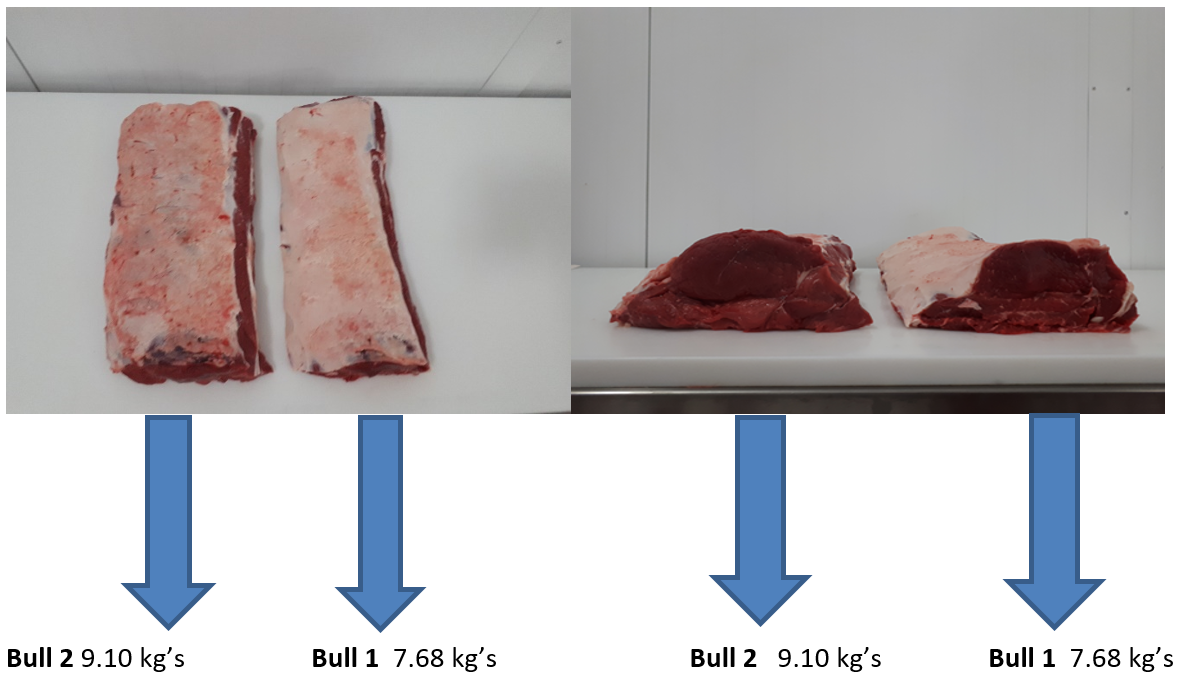
Tully is delivering on its core objectives. To increase the profitability of the national suckler herd by providing key data on hard to measure traits linked to profit such as feed intake and meat quality. It is also validating the eurostar Indexes while demonstrating the value of better genetics to the beef industry.
